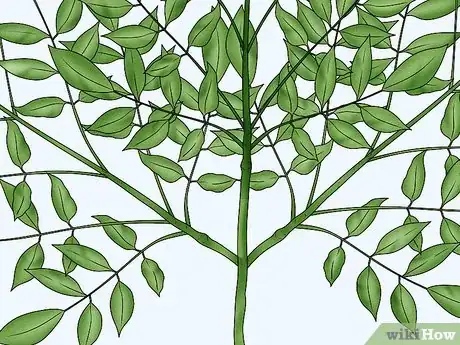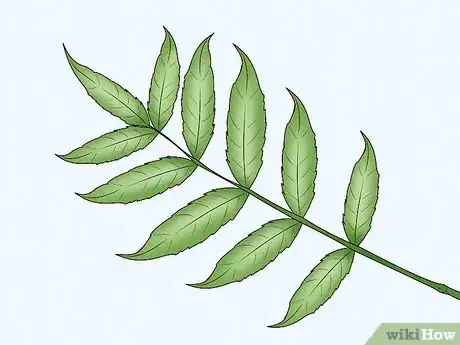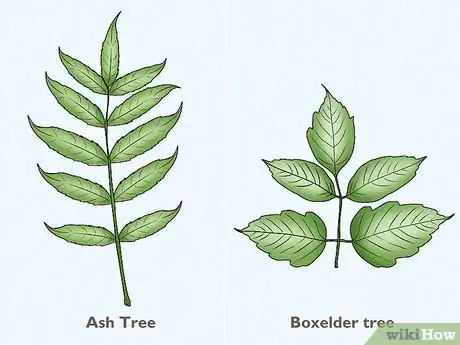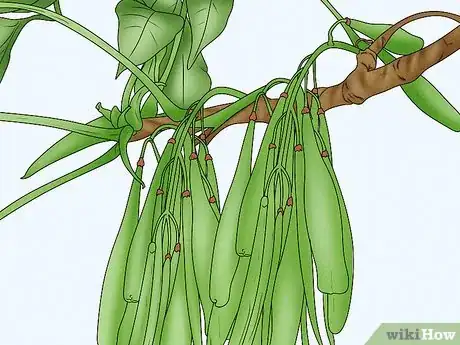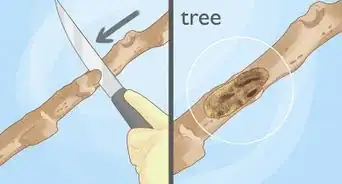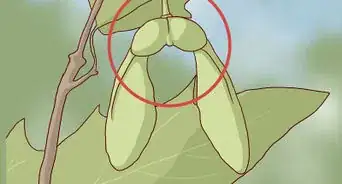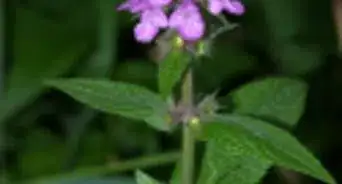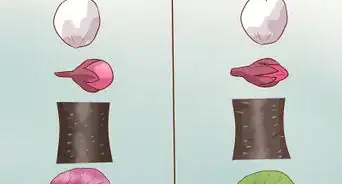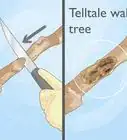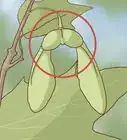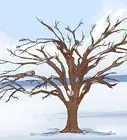This article was co-authored by Michael Simpson, PhD. Dr. Michael Simpson (Mike) is a Registered Professional Biologist in British Columbia, Canada. He has over 20 years of experience in ecology research and professional practice in Britain and North America, with an emphasis on plants and biological diversity. Mike also specializes in science communication and providing education and technical support for ecology projects. Mike received a BSc with honors in Ecology and an MA in Society, Science, and Nature from The University of Lancaster in England as well as a Ph.D. from the University of Alberta. He has worked in British, North American, and South American ecosystems, and with First Nations communities, non-profits, government, academia, and industry.
wikiHow marks an article as reader-approved once it receives enough positive feedback. In this case, 100% of readers who voted found the article helpful, earning it our reader-approved status.
This article has been viewed 144,641 times.
Ash trees belong to the Fraxinus species and grow commonly in cities and forests. It can be easy to mistake an Ash tree for Black Walnut, Maple, Boxelder, Hickory or Dogwood trees. You will need to compare several plant characteristics, including the leaves, branches and seeds, to confidently identify an Ash tree.
Steps
Comparing Branches
-
1Pull down a branch from the tree so that you can view it more easily. You can also pick up a dead stick that has already fallen to the ground.
-
2View whether the branches have opposite branching. This means that branches originate from the same point when they extend from the main branch. Other trees have alternate branching, with branches alternating left and right as they grow from the main branch.[1]
- Boxelder, Dogwood and Maple trees also have opposite branching.
- Hickory, Butternut, Oak, Cottonwood and Quaking Aspen trees have alternate branching.
Advertisement -
3
Comparing Leaves and Seeds
-
1Find a branch with leaves on it. An Ash tree has a compound leaf structure, rather than a single leaf structure.[4] Look for the thickened base of the stem, called a petiole, and decide whether there is a single leaf or 5 to 11 smaller leaflets that branch out from that point.[5]
- These 5 to 11 leaflets compose a single leaf.
- A Maple tree is an example of a single leaf tree that has one large leaf extending from the petiole.
-
2Combine the opposite branching and compound leaves to decide if the tree is an Ash. The only other tree that shares these two characteristics is a Boxelder tree. Yet, the Boxelder tree has three to five leaflets instead of five to 11.[6]
-
3Find light green or brown clusters of seeds.[7] They are paddle shaped and look like small delicate leaves. They hang down in large groupings from the tree.[8]
- Don’t assume a tree without seeds is not an ash tree. Some types of ash are seedless. Seed clusters only form in late fall and early winter.
- Boxelder seeds are also clustered; however, they look like wings, rather than paddles.
Expert Q&A
-
QuestionHow do I identify an ash tree without leaves?
 Michael Simpson, PhDDr. Michael Simpson (Mike) is a Registered Professional Biologist in British Columbia, Canada. He has over 20 years of experience in ecology research and professional practice in Britain and North America, with an emphasis on plants and biological diversity. Mike also specializes in science communication and providing education and technical support for ecology projects. Mike received a BSc with honors in Ecology and an MA in Society, Science, and Nature from The University of Lancaster in England as well as a Ph.D. from the University of Alberta. He has worked in British, North American, and South American ecosystems, and with First Nations communities, non-profits, government, academia, and industry.
Michael Simpson, PhDDr. Michael Simpson (Mike) is a Registered Professional Biologist in British Columbia, Canada. He has over 20 years of experience in ecology research and professional practice in Britain and North America, with an emphasis on plants and biological diversity. Mike also specializes in science communication and providing education and technical support for ecology projects. Mike received a BSc with honors in Ecology and an MA in Society, Science, and Nature from The University of Lancaster in England as well as a Ph.D. from the University of Alberta. He has worked in British, North American, and South American ecosystems, and with First Nations communities, non-profits, government, academia, and industry.
Registered Professional Biologist Ash leaves don’t generally turn brown before they fall, so if you are looking too late in the year to see them on the tree, you may be able to recognise them on the ground. Before the new season’s leaves burst in the spring, you should look at the buds as they are starkly black in colour.
Ash leaves don’t generally turn brown before they fall, so if you are looking too late in the year to see them on the tree, you may be able to recognise them on the ground. Before the new season’s leaves burst in the spring, you should look at the buds as they are starkly black in colour. -
QuestionAre mountain ash and ash trees the same thing?
 Michael Simpson, PhDDr. Michael Simpson (Mike) is a Registered Professional Biologist in British Columbia, Canada. He has over 20 years of experience in ecology research and professional practice in Britain and North America, with an emphasis on plants and biological diversity. Mike also specializes in science communication and providing education and technical support for ecology projects. Mike received a BSc with honors in Ecology and an MA in Society, Science, and Nature from The University of Lancaster in England as well as a Ph.D. from the University of Alberta. He has worked in British, North American, and South American ecosystems, and with First Nations communities, non-profits, government, academia, and industry.
Michael Simpson, PhDDr. Michael Simpson (Mike) is a Registered Professional Biologist in British Columbia, Canada. He has over 20 years of experience in ecology research and professional practice in Britain and North America, with an emphasis on plants and biological diversity. Mike also specializes in science communication and providing education and technical support for ecology projects. Mike received a BSc with honors in Ecology and an MA in Society, Science, and Nature from The University of Lancaster in England as well as a Ph.D. from the University of Alberta. He has worked in British, North American, and South American ecosystems, and with First Nations communities, non-profits, government, academia, and industry.
Registered Professional Biologist Not at all. Mountain ash isn't actually true ash. Despite being similar, mountain ash's leaves tend to be more rounded and more distinctly toothed.
Not at all. Mountain ash isn't actually true ash. Despite being similar, mountain ash's leaves tend to be more rounded and more distinctly toothed. -
QuestionDoes an ash tree have fruit?
 Michael Simpson, PhDDr. Michael Simpson (Mike) is a Registered Professional Biologist in British Columbia, Canada. He has over 20 years of experience in ecology research and professional practice in Britain and North America, with an emphasis on plants and biological diversity. Mike also specializes in science communication and providing education and technical support for ecology projects. Mike received a BSc with honors in Ecology and an MA in Society, Science, and Nature from The University of Lancaster in England as well as a Ph.D. from the University of Alberta. He has worked in British, North American, and South American ecosystems, and with First Nations communities, non-profits, government, academia, and industry.
Michael Simpson, PhDDr. Michael Simpson (Mike) is a Registered Professional Biologist in British Columbia, Canada. He has over 20 years of experience in ecology research and professional practice in Britain and North America, with an emphasis on plants and biological diversity. Mike also specializes in science communication and providing education and technical support for ecology projects. Mike received a BSc with honors in Ecology and an MA in Society, Science, and Nature from The University of Lancaster in England as well as a Ph.D. from the University of Alberta. He has worked in British, North American, and South American ecosystems, and with First Nations communities, non-profits, government, academia, and industry.
Registered Professional Biologist Yes! Ash fruits have wings similar to those found on seeds of maples. On ash fruits, however, the seeds occur singly on stalks rather than in pairs and the wings are narrower.
Yes! Ash fruits have wings similar to those found on seeds of maples. On ash fruits, however, the seeds occur singly on stalks rather than in pairs and the wings are narrower.
Warnings
- Ash trees are endangered by emerald ash borers in some locations in the Midwest. Planting new ash trees is discouraged because of the prevalence of this insect.⧼thumbs_response⧽
Things You'll Need
- Branches
- Leaves
- Seed clusters
References
- ↑ https://www.dnr.state.mn.us/invasives/terrestrialanimals/eab/idashtrees.html
- ↑ Michael Simpson, PhD. Registered Professional Biologist. Expert Interview. 8 September 2021.
- ↑ https://www.moncton.ca/how-identify-ash-tree-0
- ↑ Michael Simpson, PhD. Registered Professional Biologist. Expert Interview. 8 September 2021.
- ↑ http://www.emeraldashborer.info/documents/E-2892Ash1.pdf
- ↑ https://www.nj.gov/agriculture/divisions/pi/prog/identifyingashtrees.html
- ↑ Michael Simpson, PhD. Registered Professional Biologist. Expert Interview. 8 September 2021.
- ↑ https://www.canr.msu.edu/uploads/files/e2942.pdf
About This Article
To identify an ash tree, the first thing you should look for is opposite branching. This means that pairs of branches extend off of the tree from the same point but on opposite sides. Ash trees always have opposite branching. Now look at the tree’s leaves. Ash trees have compound leaves, which are leaves that are made up of multiple leaflets instead of a single leaf. Ash trees usually have 5-9 leaflets per leaf. Only Ash trees and Boxelder trees have both opposite branching and compound leaves, but the leaves on Boxelder trees usually only have 3-5 leaflets, not 5-9. You can also examine the tree’s bark. Older ash trees usually have bark with a distinct diamond pattern, though young ash trees have smooth bark. For more advice, including how to identify an Ash tree by its seeds, read on!

